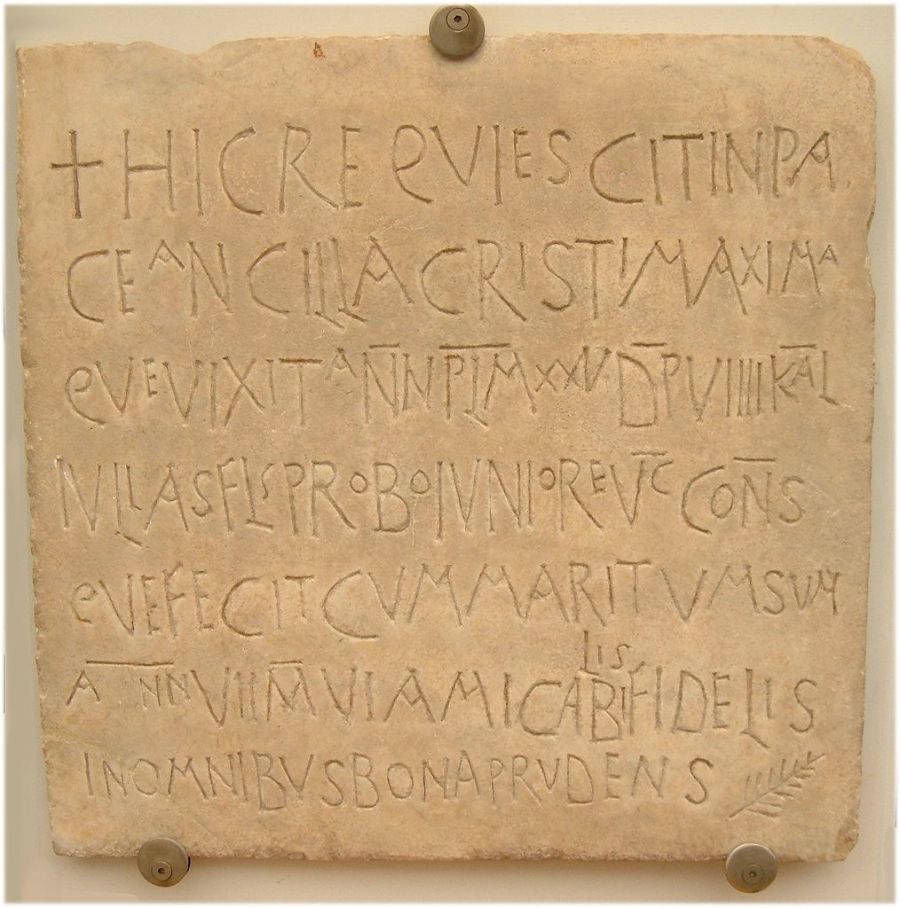
1 After this, Jesus appeared again to his followers at Lake Tiberias.1 This is how he appeared: 2 Simon Peter and Thomas (the one called “Twin”)2 and Nathanael (the one from Cana in Galilee), the sons of Zebedee, and two others of his followers were together. 3 Simon Peter told them, “I’m going fishing.”
“We’ll go with you,” they said.
They went out and got into the boat, but that night they caught nothing.
4 It was now3 early in the morning, and Jesus stood on the shore. However, the followers did not realize it was Jesus.
5 Jesus asked them, “Boys,4 you haven’t caught any fish,5 have you?6”
“No,” they answered.
6 He told them, “Throw the net on the right side of the boat and you’ll find some.”
So they threw it, and could not even haul it in because of the large number of fish.
7 Then the follower whom Jesus loved said to Peter, “It’s the Lord!” When Simon Peter heard it was the Lord, he tucked in7 his fisherman’s coat8 (he was lightly dressed)9 and jumped into the lake. 8 But the other followers came in the boat, dragging the net with the fish, because they were not far from land, about 90 meters10 away. 9 When they went on shore, they saw a charcoal fire there, with fish on it, and bread. 10 Jesus told them, “Bring some of the fish you just caught.”
11 Simon Peter got in the boat and hauled the net on shore. It was full of large fish—153 of them. But even though there were so many, the net was not torn.
12 Jesus said, “Come and eat breakfast.” None of the followers dared to ask him, “Who are you?”. They knew it was the Lord. 13 Jesus came, took the bread, and gave it to them. He did the same with the fish. 14 This was now the third time Jesus had appeared to the followers after he was raised from the dead.
15 After they had eaten breakfast, Jesus asked Simon Peter, “Simon, son of John,11 do you love12 me more than these men do?”
Peter told him, “Yes, Lord; you know I love you.”
Jesus said, “Take care of my lambs.”
16 Jesus asked him the second time, “Simon, son of John, do you love me?”
He told Jesus, “Yes, Lord; you know that I love you.”
Jesus said, “Take care of my sheep.”
17 He asked Peter the third time, “Simon, son of John, do you love me?”
Peter was hurt because Jesus asked him the third time, “Do you love me?”
He told him, “Lord, you know everything; you know that I love you.”
Jesus said, “Take care of my sheep. 18 I tell you the truth, when you were young, you used to tie your belt and go where you wanted to. When you are old, you will stretch out your hands, and someone else will tie you and take you where you don’t want to go.” 19 (He said this to indicate the kind of death by which Peter would reveal God’s divine nature.13) Then he told him, “Follow me!”
20 Peter turned and saw the follower whom Jesus loved following them. (He was the one who leaned back against Jesus’ chest at supper and asked, “Lord, who is going to betray you?”14)
21 When he saw him, Peter asked Jesus, “Lord, what about him?”
22 Jesus told him, “If I want him to stay alive until I come, what business is it of yours? You follow me.” 23 So a rumor spread among the brothers and sisters that this follower would not die. But Jesus did not say he would not die; he said, “If I want him to stay alive until I come, what business is it of yours?”
24 This is the follower who testifies about these things, and who wrote them down. We know his testimony is true. 25 Indeed, there are many other things Jesus did. If each one were written down, not even the whole world, I suppose, would hold the books that would be written.
Endnotes
1 That is, Lake (the Sea of) Galilee, Jn. 6:1.
2 Grk. Δίδυμος, Didymus; also in 11:16; 20:24.
3 Following the 2 aor.* ptc.* reading with the text of UBS4 and Nestle27, rather than the pres.* ptc.* in the margin of Nestle. So also SBLGNT; cf. KJV, JB, NRSV.
4 FE trans., “children”, Grk. παιδία, paidia, voc.* pl. neut. of παιδίον. “Boys” (cf. Barclay and Williams, “Lads”) is a more natural equivalent. This was a common way to address men at work (EGT, I, 868).
5 Grk. προσφάγιον, prosphagion, “something to eat”, <προς + acc.*, “with”, φαγειν, “to eat”; something eaten with other food, but in Hell.* Grk., “fish”, because they were commonly eaten (EGT, ibid.)
6 The Grk. begins the question with μή, mē, which expects a negative answer.
7 The verb means this or “tie up/around” (cf. Jn. 13:4—5), not “put on”. Cf. Anchor Bible and THJ, 627-628.
8 Grk. ἐπενδύτης, ependutēs, an outer garment worn over the underclothes; probably a fisherman’s smock (THJ, 628).
9 FE trans., “naked”, but sometimes meaning “lightly dressed”. i.e., not wearing the outer robe or cloak (ἱμάτιον, himation). THJ, 628; EGT, 868; BAGD, γυμνος, 167.
10 100 yards; Grk. ὡς ἀπὸ πηχῶν διακοσίων, ōs apo pēchōn diakosiōn, “about 200 cubits”. 1 cubit was approximately 45 cm or 18 in.
11 Some MSS read “Jonah” instead of “John” here and in vv. 16-17 (Grk. Ἰωνᾶ vs. Ἰωάννου; thus reading “Jonas” in KJV). This is an assimilation to Mt. 16:17, where Peter is addressed by Jesus as Σίμων Βαριωνᾶ, “Simon Bar-Jonah”. The latter means “son of Jonah” in Aramaic.
12 Jesus’ question uses ἀγαπάω, agapaō for “love” here and in v. 16; φιλέω, phileō in v. 17. Peter answers with φιλέω each time. Some see a difference between the two verbs, considering ἀγαπάω to always be the higher, nobler form of love, and φιλέω to be merely warm feelings or friendship. However, John’s usage elsewhere is decidedly against this view, both in this gospel and in his other writings. Both verbs are used for human love for Jesus and for God the Father: ἀγαπάω in Jn. 8:42 (hypothetical), 14:15, 21, 23, 28; 1 Jn. 4:10, 19—21 and φιλέω in Jn. 16:27 (where, it should be noted, the disciples’ love is placed on the same level as their belief that Jesus came from God, and rewarded by love from the Father, which, interestingly, is expressed by φιλέω also). Both verbs are used for divine love toward others. ἀγαπάω is used for the Father’s love for Jesus in Jn. 3:35; 10:17; 15:9; 17:23—26; φιλέω is used the same way in Jn. 5:20. The Father’s love for humanity in general, and for Jesus’ followers, is expressed by ἀγαπάω in most cases (Jn. 3:16; 14:21, 23; 1 Jn. 4:10—11, 19). However, φιλέω is used to express God’s love for the same people in Jn. 16:27. Jesus’ love for his followers is also expressed by both verbs: again, more commonly by ἀγαπάω, but also by φιλέω in Jn. 11:3 (note 11:5 where ἀγαπάω is used in parallel), 11:36; 20:2; Rev. 3:19. It is impossible to believe that Jesus, whom John and the other New Testament writers present as both fully God and fully human, is depicted as loving anyone in less than the best, most noble way. It should also be noted that φιλέω is used by the Apostle Paul for Christian’s love for the Lord Jesus (1 Cor. 16:22), and that one who does not love him that way is under God’s curse. Similarly, Paul uses φιλέω in a positive way for mutual love between Christians (Tit. 3:15). And, we should also note that both verbs can be used to describe love for the wrong things, for what is evil (Jn. 3:19; 14:23; 1 Jn. 2:15; Rev. 22:15). John is simply using the two verbs as synonyms.
It should also be noted that in this same chapter of John, John 21, the writer uses two different verbs for the care of Christians as spiritual sheep (βόσκω, boskō, vv. 15, 17; ποιμαίνω, poimainō, v.16), two different words for sheep (ἀρνίον, arnion, v. 15; πρόβατον, probaton, vv. 16, 17), and two different verbs for knowledge (οἶδα, oida, v. 15—17, 3 x; γινώσκω, ginōskō, v.17, used in parallel with οἶδα in the same verse), again without any discernible difference in meaning.
13 Or, “would honor God”.
14 Jn. 13:23, 25
To download a printable copy of this post, choose a format and click on the link below.
Microsoft Word (.docx file), also works in Apple Pages
LibreOffice (.odt file), also works in Microsoft Word
Adobe Acrobat Reader (.pdf file), also works in Apple Preview
Let Ancient Voices Speak
Site Materials Usage Statement
Articles and other materials on this site may be copied and distributed for individual or group Bible study or educational use, provided that there are no changes or edits. Additionally, portions of articles or other materials may be used in church bulletins or other publications provided that complete sentences and/or paragraphs are used and titled with the same title used on the website, and no changes or edits are made. The materials may also be reproduced on other websites provided that they are not edited or altered from their original content and that credit is given to Dewayne Dulaney, including the site title Let Ancient Voices Speak and the original web address from which they are taken. The above copyright notice must also be included when the materials are reproduced or distributed. Only non-profit uses are permitted. The materials may not be offered for sale or included in items offered for sale.
Your comments and questions are welcome. To leave a comment or question, fill out the form below and submit by clicking the Contact Us button.
Trademark Credits
Adobe and Adobe Reader are trademarks of Adobe Systems, Inc.
Apple and Pages are trademarks of Apple, Inc.
Libre Office and Open Office are trademarks of The Document Foundation.
Mac, Macintosh, and OS X are trademarks of Apple, Inc.
Microsoft and Word are trademarks of Microsoft Corporation.
Preview is a trademark of Apple, Inc.
Image Credits
Featured image: Early Christian Woman’s Epitaph, Rome. Latin, 6th century. Image courtesy of WikiMediaCommons. Online at https://commons.wikimedia.org/wiki/File:Early_Christian_Funerary_inscription.jpg
Sheep at market image courtesy of WikiMediaCommons. Online at https://commons.wikimedia.org/wiki/File:Waldschafe.jpg
Powered by Apple Macintosh OS


Wow. I’ll read John in Greek this month. I’ll check your series on this. Happy New Year!
LikeLike